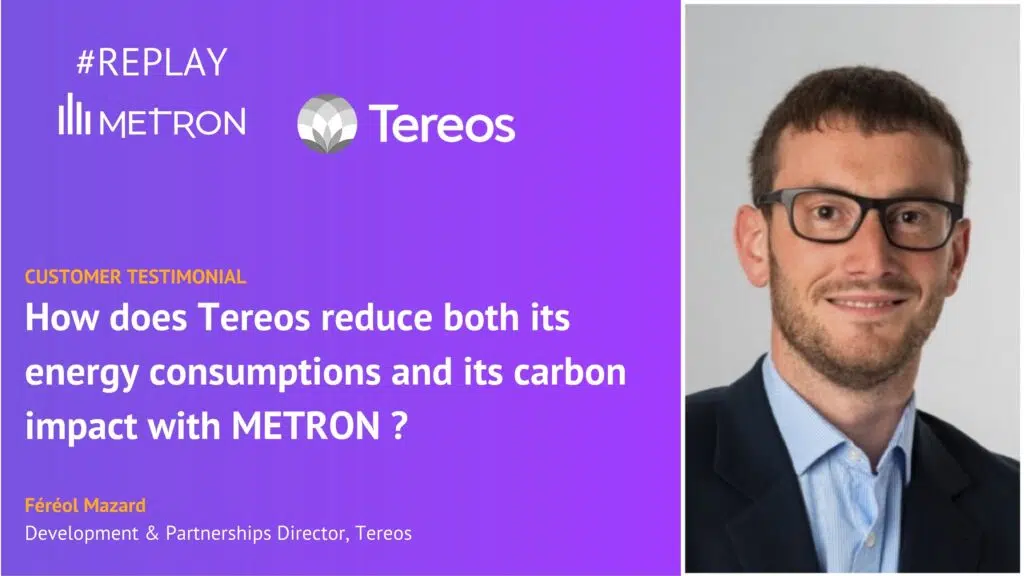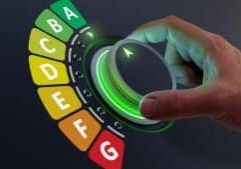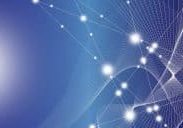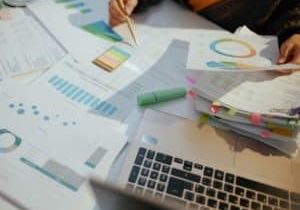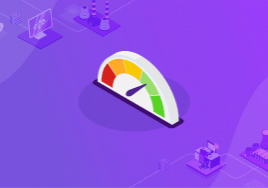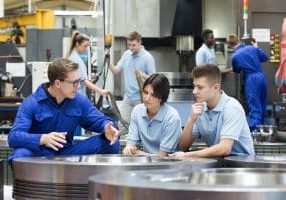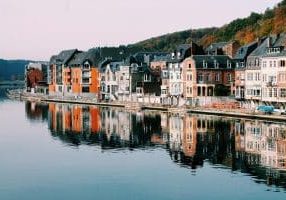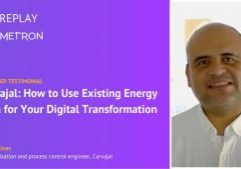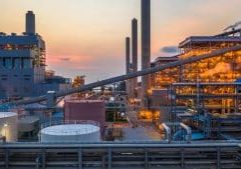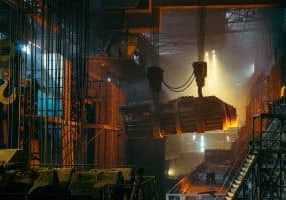Tereos, a cooperative group, is one of the world leaders in the sugar, starch and alcohol markets. Féréol Mazard, Director of Development and Partnerships at Tereos, tells us about the implementation of the Dalkia Analytics by METRON solution at the Lillebonne agro-industrial site in the Seine Maritime region, France.
Your cooperative group is one of the world leaders in the sugar, starch, and alcohol markets. Is digitalization important for you?
Yes, absolutely, with 48 industrial sites in the world that transform millions of tons of agricultural raw materials and all the associated logistics activities, the challenge of digitalization - that is, the collection and sharing of information and the work on the available information, everything that is data science - is essential. Data science has been used for years at Tereos and has been reinforced recently with pilots and trials, as well as in new sectors such as energy, where we are going to use these technologies and artificial intelligence. Energy is at the heart of our industrial activities. It is also a key lever for reducing carbon emissions generated by burning fossil fuels for industrial activities. So, there you have it, we have to move faster in a very competitive world, and we are using these new technologies for that.
So it must be very important for you to take action.
It’s important to take action. There are different fields, but you can find a lot of expertise on the market, and specialized people. You can get help and that way you can make gains and continue to find new performance levers. We are always striving for operational excellence with the help of up-to-date technologies.
You have implemented Dalkia Analytics by METRON solutions. It must be said that your plants in the TEREOS group consume a lot of energy.
Absolutely, we can look at the Lillebonne plant in Seine Maritime. We are on a large agro-industrial site, with about 200 people. The site transforms wheat into bioethanol fuel that is mixed with gasoline, to make transportation greener, as well as vegetable protein, glucose syrup, and cattle feed. The site has been ISO 50001 certified for 6 years. So, it’s not something new in terms of energy management and the focus on the site’s energy consumption. But, we’ve actually ramped it up with the Dalkia Analytics by METRON solution using a very simple approach. This is a site that consumes about 850 GWh of energy per year. It’s huge. It represents an annual budget of around 25 million euros and is very complex. We have several steam networks with different pressure levels. We have 5 production tools, 4 boilers on the site, plus we import recovered energy from a nearby industrial site. A hot water loop is also used to recycle energy between processes. The processes are quite complex and are coupled with distillation, vacuum evaporation, dehydration, drying, etc. There you have it, high energy consumption and a complex, interlinked site where this solution seemed ideal to us.
You have worked on two projects with Dalkia Analytics and METRON. The first one was designed to reduce energy losses related to steam. The second one was designed to reduce energy losses related to humidity. What were your objectives for these two projects?
Yes, that’s right. We worked on energy and water consumption. They are very closely linked and they both have a strong impact on the site’s integration into its environment. The first objective was to gain a better understanding of consumption and to be able to model it. As I said before, the site is complex. Already, it is not easy to be able to assess the situation in order to identify drifts or losses. With the tool, which constantly retrieves a large volume of data, we have even been able to recover the history. You can imagine that on a site like this there are about 50,000 points recorded per second in the history systems. So, we have a lot of data. Here we were able to create a model in order to better understand the distribution and consumption of energy for each process. To make assessments to improve monitoring and therefore detect the measurements as soon as possible, we will move from a granularity that could be monthly or daily for certain points to an almost instantaneous granularity that will allow us to immediately identify that we have a drift and explain it or correct it to reduce the losses associated with these drifts.
Artificial intelligence is a catalyst for continuous improvement. We will use the tool which, with all of its complexities, is in reality virtually transparent in real time. It will allow us to identify drifts, to give the right information at the right time, and to act on the right levers. It’s also interesting to measure the gains. We improve what we measure, but it’s also beneficial because...artificial intelligence is not an end in itself. It’s not going to operate the valves, but it’s useful for the people who use the tool to know that they have acted correctly, within the right timeframe, and for everyone to see that we are delivering results.
« The tool also allows you to focus on the most important problems, to avoid dispersing yourself.»
Féréol Mazard, Director of Development and Partnership at Tereos.
Modeling allows us to identify and classify the sources of energy, so that we can focus on the essentials once again and focus our efforts where it is most important to save energy.
We made a kind of mathematical formula of the plant’s consumption with all the influencing factors. This can range from the temperature of the outside air to raw materials, such as wheat. Wheat is a living thing, so there are variations in quality that will lead to variations in energy consumption in the process. And this formula will allow us to explain it. Explaining it, and understanding it, inevitably helps us to improve it.
Could you give us some more concrete examples of what this could lead to?
Yes, I have a fairly clear example of a drying process we worked on. During this process, there are several possible sources of energy. We will recover energy from different processes in the plant. We will also bring “noble” steam directly from the production tools for this process. And according to the 4 functions of the plant, we had different settings. The tool made it possible to ensure that they were the right ones and to improve others where necessary. Today we have a new settings map, which represents about 2 tons of steam per hour and 15, 000 tons saved per year, thanks to this scientific and mathematic approach to consumption.
« 15,000 tons per year saved thanks to this new scientific and truly mathematical approach to consumption and a battery of tests.»
Féréol Mazard, Director of Development and Partnership at Tereos.
There are some very nice things. Today, all the computer tools allow it, but we have especially tried to make useful applications. We made the tool evolve as we went along. We have tried to make it suitable for different users. And the main thing when you want to operate in real time is that the operators have something quite understanding that allows them to focus on key points. It seems very simple on the surface, but behind it there are algorithms, calculation systems, the integration of past data, etc. Models that are very complex but provide simple information that allows them to react and reduce drift.
With quantitative and qualitative results?
Absolutely. Already in terms of quality, this approach implies questioning many things. We exchanged ideas, we had many workshops. Because we had the process expertise. Dalkia analytics, made up of the Dalkia teams and METRON, had the expertise in data science, and we had to work together so that the two worlds could communicate. Artificial intelligence needs people to be configured and to function. So here we had an initial result right away, which was that we were able to ask a certain number of questions and improve our understanding so that we could explain it to the Dalkia Analytics teams, which also helped us make progress. So that was a good result.
« Some people have become aware of the value of this type of solution to save energy, we have had quantitative results. »
Féréol Mazard, Director of Development and Partnership at Tereos.
Almost everyone was aware of it, but it’s an extra layer. And then the quantitative results, because this focus on energy consumption has actually allowed us to reduce consumption. We’re talking about a reduction of several percent on a site of this size, which is very significant.
We started with the problems to be solved, and they guided us on how to carry out this project, with real dynamism in terms of support afterwards. Today it’s also been a year, a little more than a year, that the solution has been working, and we are still receiving very close support. We always have answers to our questions, and there is a real willingness to understand and to support us and to help us to make it a success.
What advice would you give to the manufacturers watching us on carrying out such a project?
Like any project, you need a team, you need a leader to guide the team. You have to accompany the changes, like in all projects. There is a first phase which is also about demystification, somehow overcoming the initial fears. We may be afraid that AI will replace us, but this is not the case. We will enhance each person, the operator or engineer in the plant, but we will not replace them. It’s important to have a fairly multidisciplinary team. We have involved people at all levels of the company to make sure that they are ready and understand what is being done. They also share any concerns they may have, and we build something that is immediately adapted to the needs of each person. So that everyone can see what the solution will do for them. We spoke earlier about ISO 50001, when we present this tool to an auditor, it is very easy to pass a certification, to show that all the items of the standard are fulfilled and measured in an effective way. The energy manager has won over operators because it will help them find the problem more quickly and obviously the technical and economic performance of the site will improve. And then there is a little bit of a sexy sales side to the solution because we are talking about industry 4.0. It’s concrete, it’s daily, it’s finally relatively simple, it’s probably a little less crazy than what we imagined at the beginning, but it’s effective, it works. We also worked in stages, which is important, as we said earlier, as Bonduelle also explained. First of all, we try to understand all the consumption before immediately looking for ways to improve. Modeling comes once we know that we have all the relevant data in the system. So it takes time, you don’t have to wait for results. There are in fact results progressively and in an increasing manner. So, there are results as we go along, the solution requires effort, but what we saw was that we were really helped, accompanied, and supported so that it could be completed.
See the Energy Management System in action
Participate in an interactive demo and discover how to achieve energy transparency in 3 months with METRON:
